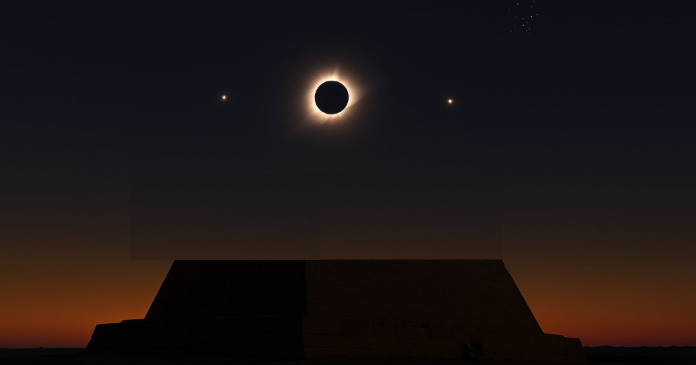The ancient eclipse that dimmed the sun god marks a pivotal moment in ancient Egyptian history, according to a paper written by Giulio Magli. Magli, an archaeoastronomer from Politecnico di Milano, argues that this total solar eclipse influenced Pharaoh Shepseskaf’s decisions. Shepseskaf ruled at the end of the 4th dynasty, and his choices broke from established traditions.
Magli connects the eclipse to Shepseskaf’s reign through astronomy and archaeology. The event occurred over the Nile Delta, with totality centered near Buto. Memphis experienced near totality, over 95 percent.
This eclipse lasted almost seven minutes, a rare duration. Visible planets Venus and Mercury flanked the eclipsed sun symmetrically. The Pleiades shimmered nearby, adding to the spectacle.
Shepseskaf’s Reign and the Break from Tradition
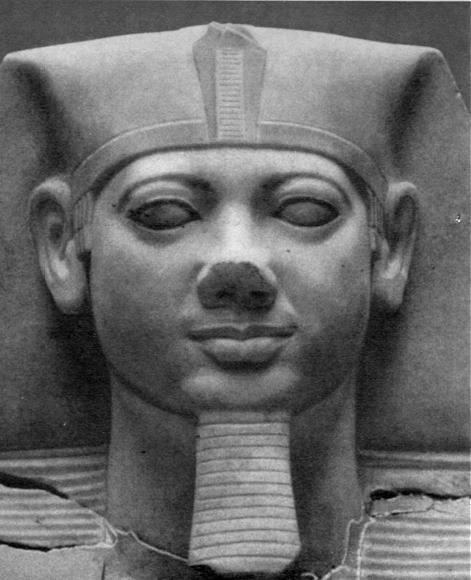
Shepseskaf succeeded Menkaura, builder of Giza’s third pyramid. His reign lasted four to seven years, around the mid 25th century BC. Sources include his tomb, a decree stela from Menkaura’s temple, and the Palermo Stone annals.
The Palermo Stone details Shepseskaf’s first year rituals. He united Upper and Lower Egypt. The annals mention choosing the pyramid’s location explicitly. This unique reference highlights the site’s significance. Shepseskaf named his monument “Shepseskaf is purified,” and ordered a shrine for Upper and Lower Egypt.
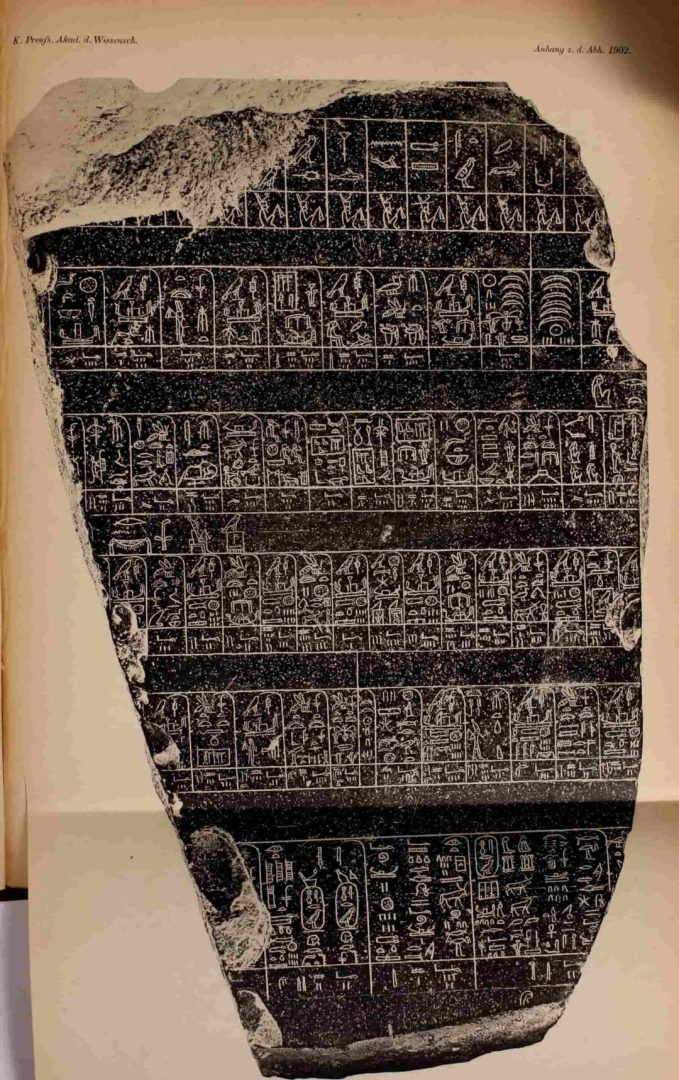
Location of the Tomb
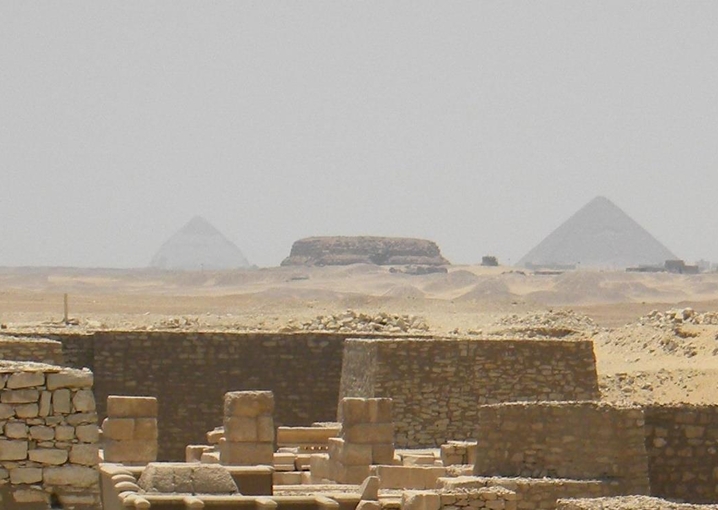
Shepseskaf selected a plateau south of Saqqara for his tomb. This spot lacked intervisibility with Heliopolis, center of the sun god Ra’s cult. Previous 4th dynasty kings built pyramids visible from Heliopolis.
Snefru, dynasty founder, constructed pyramids at Dahshur. They formed a double mountain symbol when viewed from Saqqara. Khufu moved to Giza, aligning his pyramid with solar phenomena.
Khufu’s successors, Djedefra, Khafra, and Menkaura, incorporated Ra in their names. They built in view of Heliopolis. Shepseskaf’s choice signaled a departure from this solar tradition.
The tomb frames Snefru’s pyramids from Saqqara, completing a landscape of power. It connects to 3rd dynasty roots near Djoser’s Step Pyramid. Practical factors like stone availability played a role, but symbolism dominated.
Magli suggests Shepseskaf abandoned an initial site at Zawiet el Arian. That location aligned with Heliopolis. Inscriptions there may link to Shepseskaf, supporting a sudden change.
Shape and Design of the Mastaba el-Fara’un
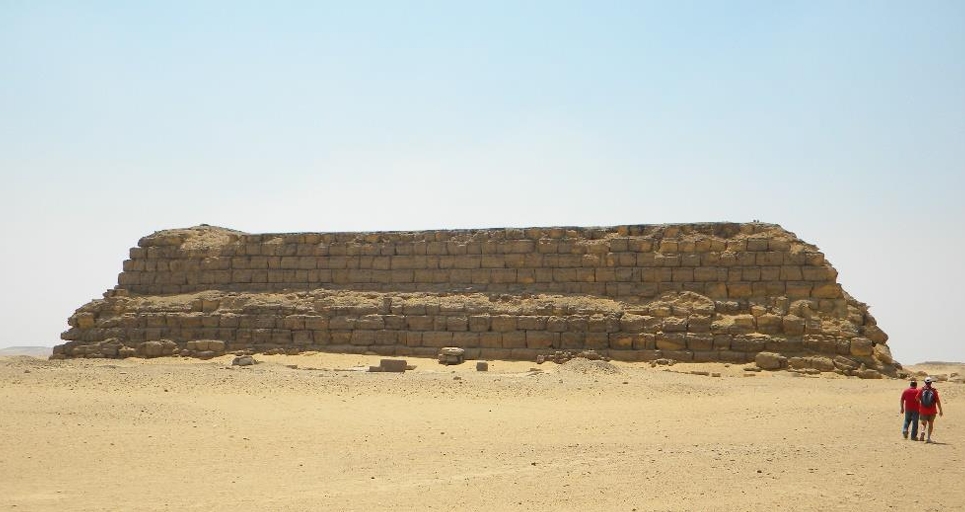
The tomb, called Mastaba el-Fara’un, measures 99.6 meters long and 74.4 meters wide, originally 200 by 150 cubits with granite casing. Sides orient to cardinal points within half a degree.
Walls slope at 70 degrees, 18 meters high, with raised ends. Construction used huge stones and precise techniques from 4th dynasty pyramids. Interior resembles Menkaura’s, with a north entrance and granite chambers.
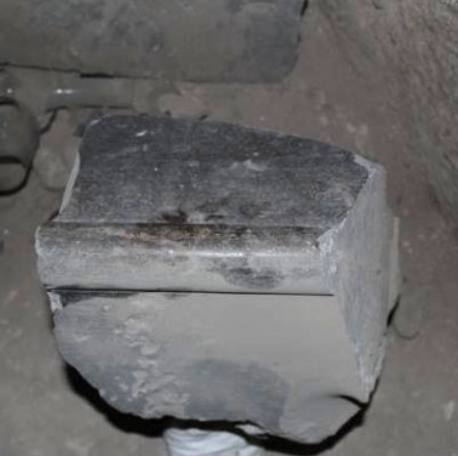
Fragments of a hard stone sarcophagi remain in the antechamber. The design of the Mastaba defies easy classification. Proposals include a temporary backup or unfinished pyramid, but evidence contradicts these.
Image Source: The Mastabat el-Fara’un, A layman’s guide
Egyptians viewed architecture as hieroglyphs in a sacred landscape. Snefru’s pyramids formed signs; Khufu’s created Akhet, the solar horizon. Shepseskaf’s tomb conveyed a message of return to pre solar roots.
Ancient Eclipse that Dimmed the Sun God Event
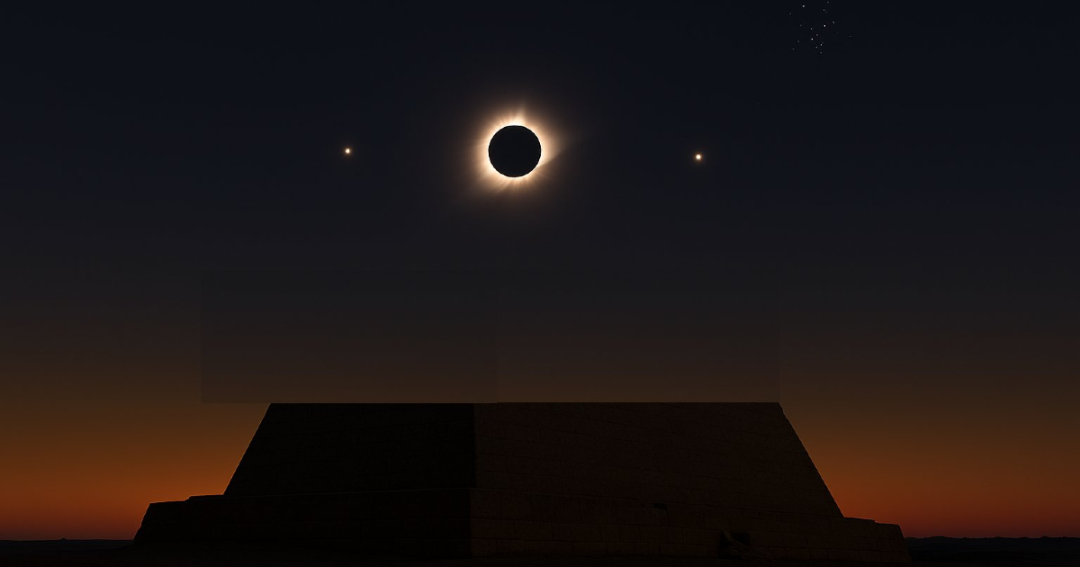
Magli identifies the the ancient eclipse that dimmed the sun god as the trigger for Shepseskaf’s break. The eclipse occurred on April 1st 2471 BC. It disrupted the cosmic order, challenging Ra’s supremacy. Ancient Egyptians saw the religious world as interaction with gods, mediated by the king.
The king maintained Maat, order. Funerary monuments formed an ordered landscape. A sudden sun perturbation, like an eclipse, demanded response.
The 2471 BC eclipse path crossed Lower Egypt. Totality hit Buto fully, Heliopolis nearly, Memphis over 95 percent. The sun rose eclipsed, totality at 7:59 AM.
Declination was minus 4 degrees; spring equinox followed on April 11. Stars like Aldebaran and Capella shone; Pleiades possibly visible. Venus and Mercury aligned symmetrically.
Totality endured nearly seven minutes, evoking terror. Magli notes this as an omen impossible to conceal.
Chronological Compatibility of the Eclipse
The date fits accepted 4th dynasty chronologies. Variations exist due to uncertain reign lengths. Four chronologies place Shepseskaf’s start around 2472 to 2503 BC.
The year 2471 BC aligns with his first year in all. Khufu’s pyramid orientation dates to 2550 BC plus or minus 10 years, favoring certain chronologies.
Eclipse calculations use delta T for Earth’s rotation variability. The formula gives about 16 hours 24 minutes for 2471 BC. Uncertainty affects the band, but Lower Egypt remains covered in most scenarios.
Implications for the 5th Dynasty and Beyond
Shepseskaf’s successor, Userkaf, restored solar traditions. His relationships with the family remain unclear; Khentkaues I may have played a role. The Westcar Papyrus credits Userkaf’s line with direct sun god descent.
Userkaf built a modest pyramid at Saqqara, near Djoser’s. He added a sun temple at Abu Gorab, with a mound later obelisk, referencing Heliopolis. This site maintains visibility from Heliopolis.
Subsequent kings developed Abusir necropolis and sun temples. The 5th dynasty emphasized Ra as state god. Royal family lost exclusive high offices, but the king’s primacy endured.
Magli’s hypothesis provides a new astronomical anchor for Old Kingdom chronology. It complements Sothic and lunar dates from later periods. The interplay of architecture and astronomy dates Shepseskaf accurately.
Conclusion
Giulio Magli’s paper offers a compelling explanation for the 4th dynasty’s end. Shepseskaf’s tomb and choices reflect a response to this celestial event. The eclipse challenged solar cults, prompting a symbolic shift.
This work integrates historical sources, archaeology, and astronomy. It explains the unique Mastaba el-Fara’un and its Buto connections. Future research may confirm or refine this astronomical dating.
The ancient eclipse that dimmed the sun god thus anchors Old Kingdom history. It demonstrates how celestial events shaped ancient decisions. Magli’s analysis enriches our understanding of Egyptian dynastic transitions.

